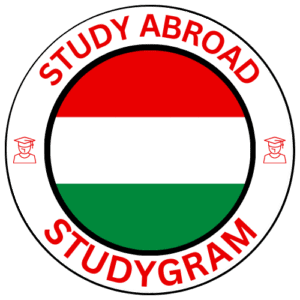
The recent meeting between faculty and administrators from Hungary’s Óbuda University (OU) and Taiwan’s National Tsing Hua University (NTHU) marked a significant step toward deepening academic ties in engineering and applied sciences. This partnership aims to support joint research projects, student mobility, and laboratory exchanges, creating new opportunities for scholars and students on both sides of the Pacific.
Key Outcomes of the Delegation Visit
During the November 2025 delegation, seven professors—together with senior research staff—visited several research hubs at OU. The tour began with the BARK Robotics Laboratory located in the University Research and Innovation Center. The visit showcased cutting‑edge robot‑kinematics research that could complement NTHU’s work on autonomous systems. Following the lab tour, the delegation and OU officials held formal discussions in the Rector’s Conference Room, where they mapped out two primary areas of collaboration: (1) joint doctoral programmes in mechanical and aerospace engineering, and (2) shared funding applications for the EU’s Horizon 2020 projects.
Engineering Collaboration: From Robotics to Materials Science
- Robotics Integration: OU’s BARK Lab specializes in soft‑robotics actuators, while NTHU’s Mechanical Engineering Department focuses on high‑performance actuators for industrial automation. Combining these strengths can lead to prototypes that are both cost‑effective and robust.
- Materials Science: A joint seminar on advanced composites offered a platform for OU’s materials scientists and NTHU’s Chemical Engineering faculty to exchange findings on nano‑reinforced polymers.
- Applied Sciences Exchange: The MedTech Laboratory at John von Neumann Faculty of Informatics hosted a showcase session on wearable health sensors, aligning with NTHU’s public‑health informatics research.
Academic Cooperation: Student Mobility & Research Grants
A cornerstone of the agreement is to establish a formal exchange plan for master’s students in engineering disciplines. Under the new framework, students from both universities can spend one semester abroad, earning credits that count at their home institution. Additionally, the partnership opens eligibility for joint research grant applications—especially within initiatives like the EU’s Horizon Europe or the U.S. National Science Foundation’s International Collaboration Program.
Practical Advice for Researchers and Students
For researchers at OU and NTHU who wish to engage in this collaboration:
- Identify overlapping research themes. Use keyword searches in your department’s research output database to find potential partners.
- Submit a joint proposal under the Horizon Europe framework. Pay particular attention to the “International Partnership” funding line—this is where the collaboration can benefit most.
- Set up a shared project management portal. Tools such as Slack or Microsoft Teams can simplify coordination across time zones.
For master’s students interested in moving abroad:
- Check the eligibility criteria on the OU International Office website. Explore exchange programs at Óbuda University.
- Prepare a research plan that clearly states how it feeds into your home university’s curriculum.
- Apply for scholarships that support bilateral student mobility—OU and NTHU have recently started offering joint scholarship funds.
These steps are designed to reduce administrative friction and maximize the impact of the partnership on both academic and professional development levels.
Leveraging the Partnership for Innovation Ecosystems
Beyond academic curricula, the alliance allows both institutions to tap into each other’s innovation ecosystems. OU’s Institute for Artificial Intelligence hosts an annual hackathon, while NTHU’s Innovation Lab runs a startup incubator focused on green technologies. By cross‑listing initiatives, innovation labs can host joint symposiums, increasing visibility for emerging researchers and entrepreneurs.
Initial Successes and Upcoming Projects
Since the meeting, OU’s Materials Department has started a collaborative project with NTHU to develop biodegradable packaging materials. The prototype has already passed lab‑scale durability tests, and a joint publication is under review in the Journal of Applied Polymer Science.
Meanwhile, the Robotics Lab and NTHU’s Autonomous Systems group are drafting a 2026 grant proposal for a “Resilient Robot‑Based Disaster Response System.” These projects illustrate how the partnership can accelerate timeline from research idea to real‑world application.
Future Directions: Building a Sustainable Bilateral Relationship
To sustain momentum, both universities have agreed on the following actions:
- Establish a bilateral steering committee that meets biannually to review progress.
- Develop a shared digital repository for data, code, and lessons learned.
- Organize bi‑annual summer schools covering advanced topics such as quantum computing architecture and additive manufacturing.
- Leverage student research assistants for cross‑facility project needs.
The plan emphasizes transparent communication and continuous evaluation—key factors that have proven effective in other long‑term international partnerships.
Get Involved: How You Can Join the Conversation
- Students: Apply for the exchange program and bring your thesis projects back to Hungary or Taiwan.
- Researchers: Explore joint grant opportunities and contact your department’s international liaison.
- Faculty: Schedule a consultation with the International Relations Office to discuss potential collaboration pathways.
These call‑to‑action steps are ready to help you take concrete steps toward deeper engagement with the OU‑NTHU partnership.
Conclusion
The collaboration between Óbuda University and National Tsing Hua University opens a broad spectrum of possibilities for individuals and institutions alike. From joint research grants to student exchanges and innovation ecosystems, the partnership is set to yield tangible outcomes that will elevate the engineering faculties of both universities. Take advantage of the available resources—whether you’re a researcher seeking a new research avenue or a student craving international exposure—to join this dynamic academic endeavor.
Ready to explore further? Submit your application today and be part of a research network that spans continents.

